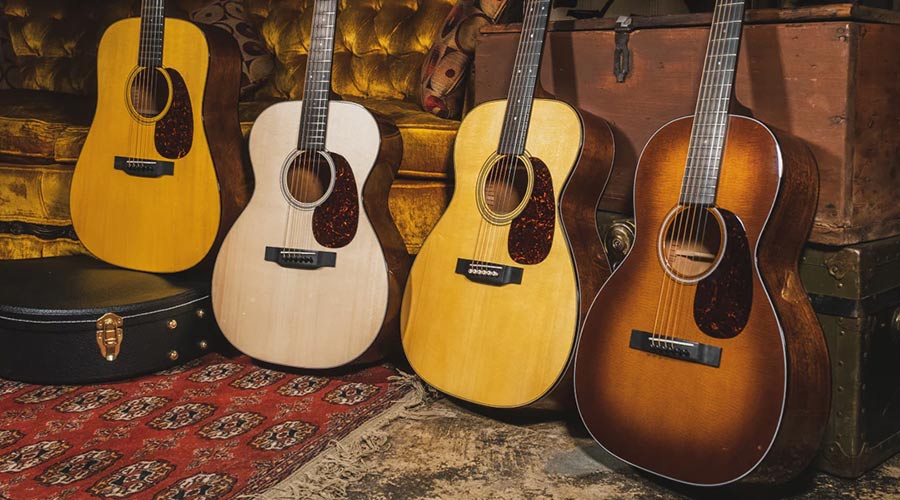
Stronger than steel and wood
Seen me through the bad and good
And when I’m hanging by a string
Every little thing
Is understood
Between Martin and me
The poetic lines above were penned by the Zac Brown Band. And yes, this song, entitled “Martin,” is exactly what it sounds like—an ode to what would seem to be one of Zac’s closest friends: his Martin guitar.
While Fender and Gibson are undoubtedly the major players in the electric guitar world, the acoustic guitar scene has its own set of titans: Taylor, Yamaha, and Gibson (once again) are some of the most popular. But when it comes down to the true quality, craftsmanship, and raw tonal prowess of the acoustic guitar, one could make the case that Martin sets the gold standard.
As a long-time supporter of Martin guitars and the proud owner of a D-15M Streetmaster, I intend to make that case.
The ‘It’ Factor
We could spend a lot of time discussing the specifics of what exactly it is that makes Martins so great—and don’t worry, we’ll get to that in a different section below. For now though, if I had to distill all the best attributes of Martin guitars down to one single characteristic, it would be this: balance. If you’ve ever played a Martin, chances are you felt this yourself before you read it here.
Balance
Taylor guitars usually have heavy bass and heavy treble, for a sound that can cut through noise and excel in contemporary pop. On the other hand, Gibsons have a bit more of an even sound, with a prominent mid-range.
Now, Martin has many different models of acoustic guitars, and they each have their own distinctive tonal qualities—in fact, even within the same line, each specific guitar feels, plays, and sounds unique. By and large, however, Martin guitars take the cake over Taylor and Gibson due to their exceptional tonal balance between bass, mid-range, and treble.
Whether you play bluegrass or folk, whether you play fingerstyle or strum with a pick, you’ll notice that your Martin has it all: a thundering low end for those emotional chord changes, a solid mid-range for volume and body, and a shiny, bright treble to even it all out. And the best part is, none of these ranges drown out the others.
Warmth
Martins are also known for their warm sound, which some dislike—but I tend to feel that acoustic guitars are supposed to sound warm. I mean, you have a hunk of real wood, from a tree, sitting in your lap and organically vibrating to create a controlled sound. If that doesn’t sound warm and pleasant to the ears, I’m not sure anything will. In my opinion, if you want a guitar that sounds inordinately harsh and loud, you should get yourself an electric.
Famous Players
As if the reputation of Martin guitars needed to be proved, here’s a list of musical icons who not only play(ed), but prefer Martins:
- Elvis played a Martin D-18, before switching to a D-28 in 1955.
- Johnny Cash owned an iconic D-35 with a customized finish.
- Soundgarden singer Chris Cornell rocked a D-28 Marquis.
- Ed Sheeran plays a 3/4 size Martin LX1.
- Marcus Mumford of Mumford & Sons has many different Martins, but usually uses his D-28.
- Willie Nelson has played an N-20 for over 50 years!
This list doesn’t even scratch the surface, but I’ll spare you—I think you get the idea.
History of The Martin Guitar
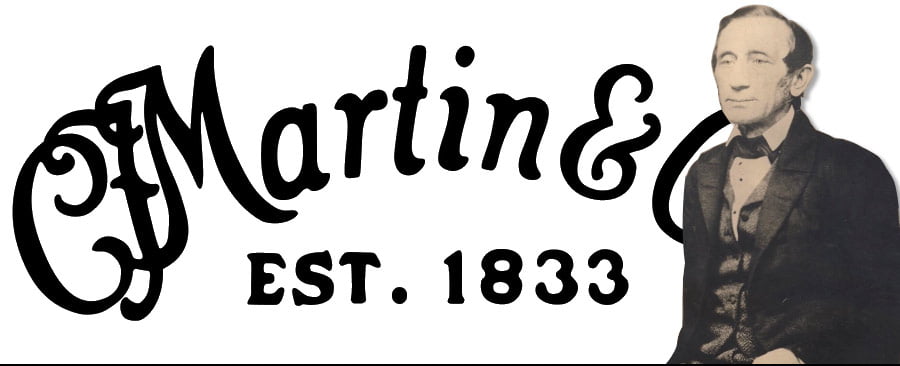
Let’s rewind way back to the early 1800s and learn about Martin’s humble beginnings.
It all began when Christian Frederick Martin, a skilled craftsman and guitar maker, set his sights on America. He left his native Germany and sailed across the blue Atlantic to New York City, where he set up shop and began making guitars.
In 1833, Mr. Martin formally established his own guitar brand, C.F. Martin & Company, in Nazareth, Pennsylvania. Today, the Martin guitar factory is still located in Nazareth, a small town nestled in the rolling hills of eastern Pennsylvania.
From the very beginning, Martin’s guitars were of exceptional quality and were highly sought after by musicians. His designs and innovations, such as X-bracing (more on this in the next section), helped shape the standard sound of the modern acoustic guitar.
What’s interesting is that Mr. Martin had been making guitars for years before officially founding his company. As such, it’s a bit tough to answer the question of when the first Martin guitar was made; I guess it depends on how you define an official “Martin” guitar. While it’s difficult to pinpoint an exact date, we do know that Martin had been making guitars as early as the 1820s, and by 1833, his business really started to take off.
The Details
Now that we’ve waded into the shallows of Martin’s “it” factor and history, let’s go a little further and examine in detail the materials and physical construction of the guitars themselves, and see how these things contribute to such a prestigious sound.
Because there are so many different Martin models, I’m going to focus on one in particular during this analysis: the D-28. The D-28 is unequivocally Martin’s most iconic model; in the 1950s, backorders for D-28s stretched as far as two years!
And what’s more is that, given its foundational place in Martin’s lineup, the varying tones and materials of different models can be easily evaluated in relation to the D-28. If Martin guitars are the gold standard of acoustic guitars, the D-28 is the gold standard’s gold standard.
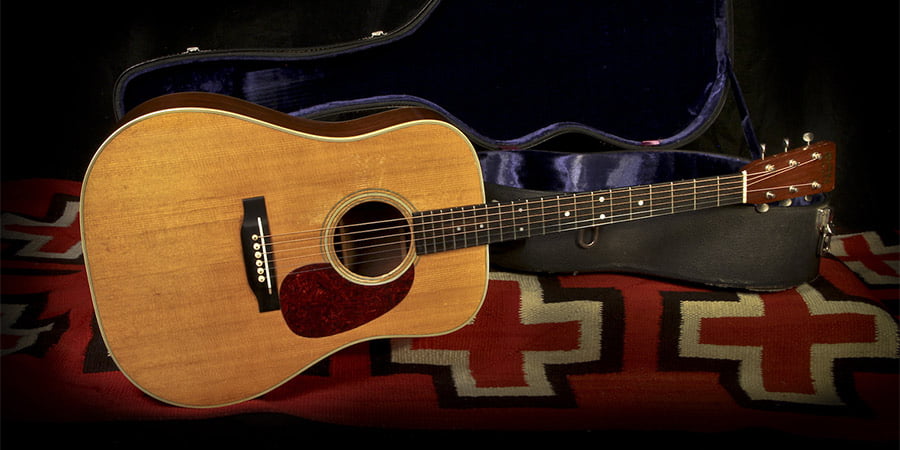
The Body
The first thing to note here is that the D-28 is a “dreadnought” guitar. This is what the “D” stands for in the name “D-28.” Dreadnought simply refers to a large-bodied guitar. At the time when Martin first popularized the dreadnought size, the industry-standard guitars had smaller bodies. Though people were skeptical at first about adopting the new dreadnought guitars, they became convinced after hearing the superior power and tone that comes part and parcel.
Back & Sides
The back and sides of the Standard Series D-28 are made of East Indian rosewood. Originally, Martin used Brazilian rosewood, which is one of the most elite tonewoods available. For a variety of reasons including deforestation, Brazilian rosewood can no longer be sustainably sourced. East Indian rosewood does the job just fine, however; it’s known to generate a heavy low-end and a bright, clear treble. D-28s from Martin’s other series’ also have rosewood, though it’s not always sourced from East India.
Top
The D-28’s top is constructed from spruce, which does an excellent job of providing the mid-range piece missing from the East Indian rosewood. Because a guitar’s top is one of the most heavily vibrating pieces on the instrument, volume and tone is usually enhanced when the material here is a bit more on the soft and flexible side. Spruce fits this bill perfectly, providing a delicate tone with lots of variety depending on play style. Martin’s iconic herringbone top inlay is still used today on the D-28s in the Authentic Series (guitars that are created today, but made to replicate those created between the late ‘20s to 1942).
Construction
East Indian rosewood is a hard, dark wood, while spruce is lighter and softer. These materials give the D-28 its iconic look: a beige-white top with a lush, dark back and sides.
In Martin’s Authentic Series, hot hide glue is used secure the different wood pieces together. Hot hide glue has many advantages over today’s synthetic glues. The most notable advantage is its ability to very firmly join different pieces of wood together into one, resulting in increased vibration and resonance, and therefore superior tone and volume. Martin’s Standard Series guitars generally have modern, synthetic glues.
One of the most groundbreaking innovations in acoustic guitar construction came when C.F. Martin invented X-bracing. “Bracing” refers to a series of wooden braces that strengthen the guitar’s body and subsequently affect vibration and tone.
Martin was the first guitar craftsman to put this bracing into the shape of an X, and this layout plays a large part in giving Martins their distinctive, warm sound. In comparison, the also popular V-bracing system generally provides more volume, but at the expense of decreasing the guitar’s warmth and sometimes overemphasizing the treble range.
The Neck
The D-28 features a mahogany neck, with an ebony fretboard and mother-of-pearl inlays. The neck has 20 frets in total, with a factory standard action of 2.38 mm to 2.78 mm at the 12th fret. The neck joins the body at the 14th fret, which is an industry-standard measurement (alongside the also-popular 12th fret joint).
In general, mahogany tends to produce a warm, woody tone. However, the guitar’s body is where most of the tone and resonance comes from—so the impact on tone from the neck material is minimal. The real benefit of a mahogany neck is its density, which makes it very unlikely that the neck will bend over time, thereby increasing the guitar’s longevity.
The Hardware
Unlike violins, cellos, and other classical instruments, guitars aren’t only wood and glue. On any acoustic guitar, the most prominent non-wood parts are the saddle and nut, the pickguard, and the tuning pegs.
The D-28 features a wooden bridge with a compensated bone saddle. The saddle is the portion of the bridge that actually touches and supports the strings. Because bone is so hard and dense, it causes minimal loss of vibration, making it a perfect choice for the saddle. The pickguard is plastic, but it’s made to look like the genuine tortoise shell used on vintage Martins. The headstock features a bone nut (it’s bone for the same reason that the saddle is bone) along with nickel tuning pegs.
Buying a Martin
Here’s where things get exciting! For me, saving up the cash and pulling the trigger on a brand-new instrument is a feeling unlike any other. If you’ve decided you want to buy yourself a Martin, but you don’t know where to start—start here!
Where to Buy
You can buy your new Martin guitar either from a third-party dealer or straight from the Martin Factory in Nazareth, PA.
Most people choose to buy from third-party dealers, as they’re accessible no matter where you’re located in the country. Martin is one of the most popular acoustic guitar brands in the United States, so any quality acoustic guitar dealer or music store is likely to have some in stock. In particular, well-known brick-and-mortar shops like Guitar Center, as well as online stores like Sweetwater usually always have a wide range of Martin models for sale.
Contrary to what you might think, the Martin Factory itself usually has only a limited available supply on hand. Buying from the Factory can be a very memorable experience, as there’s a small museum on the premises and Martin offers tours of the Factory—but if you have your heart set on a specific model, I recommend you call ahead to inquire about availability.

Some Advice
This may be a controversial statement, but the best piece of advice I can give you when it comes to purchasing a guitar is this: buy used. If you’re like me, you don’t care if your guitar is in perfect cosmetic condition. A few tiny scratches here and a few dents there make no difference, as long as the guitar’s playability is unaffected.
If you’re okay with this (like I am) you’ll be able to “move up” and purchase a Martin that would otherwise be beyond your budget. If you have $1,000 to spend and you’re willing to buy used, you can get yourself a $1,500+ guitar with that $1,000. Just be cautious and never send a payment to a seller unless you’re 100% certain you’re not being scammed.
Finding the Right Martin Model
The best way to begin the journey of discovering your perfect Martin is to compare the company’s many different series’. Here’s a short summary of the main ones to get you started:
- Martin’s Standard Series offers exactly what it sounds like: Martin’s most foundational, tried-and-true guitars that helped define the sound of the American acoustic guitar. Prices are around $2,500 and upwards.
- The X Series is perfect for the budget-savvy buyer. These guitars are versatile and durable. They retain Martin’s iconic sound at a significantly reduced price, starting at around $550.
- The Modern Deluxe Series offers a cross between vintage construction and modern technology. Prices are from $3,600 and up.
- Martin’s Junior Series consists of excellent-sounding, smaller-bodied guitars at very reasonable prices. Martin advertises these guitars as ideal for beginners, with prices starting at $500.
- Finally, the Authentic Series is the cream of the crop. These guitars are detailed replicas of Martins created during the so-called Golden Era: the late 1920s to 1942. Prices are understandably steep: the cheapest models start at around $5,700, with prices rising all the way to $50,000!
Once you’ve done some research and have a general idea of the pros and cons of each series, take a look at these additional considerations to further guide you in the right direction:
- What’s your proficiency? Be honest here: are you a beginner, intermediate, or advanced player? If you’re closer to the beginner side of the spectrum, I suggest you don’t blow a huge amount of money on a D-28 or D-18. Consider the X Series or Junior Series in this case.
- What’s your budget? If you’re not willing to pay more than $1,000, you’ll be very hard-pressed to find an acceptable Standard Series, Modern Deluxe Series, or Authentic Series guitar.
- What’s your playstyle? Do you use a pick and strum your heart out? Do you play intimate fingerstyle? In general, Martins are all incredibly versatile—but if you have a specific sound you’re going for, do yourself a favor and buy a guitar that enhances that sound. In my opinion, the bigger, dreadnought Martins are ideal for warm, intimate sounds, as the large body offers a nice low-end that enhances the emotionality of your playing. On the other hand, if you’re in a pop band, I’d go with an X Series or Junior Series, as the specific tonal character and dynamics are likely to be less important in this case.
- Finally, think about convenience. Do you want to bring this guitar with you everywhere? Do you want to play at campfires? On the beach? If so, don’t get a huge, $3,000 D-28 that you’ll want to guard with your life. A Junior Series Martin would fit this bill perfectly.
Making It Your Own
Martins aren’t exactly known for needing many modifications. Acoustic guitars are, understandably, much more limited in their applications than electric guitars. As a result, there are only so many different sounds you can get from your Martin by tweaking it. Still, modifying your guitar can be fun. Some of the most popular ones are listed below.
- Probably the most common modification for acoustic guitars in general is the installation of an electronic pickup system. Many Martin guitars can be purchased with a pickup already installed, but others come only bare bones. Pickups are becoming essential for any performing acoustic guitarist, as they allow your guitar to be amplified tremendously in venues, with minimal feedback.
- Changing the pickguard is obviously entirely cosmetic, but it’s a relatively easy process, and many players feel like choosing a customized pickguard makes their guitar more personal.
- Swapping out the saddle or nut for a different material can produce some interesting tonal and volume changes. By and large, though, Martin’s bone saddles and nuts are of excellent quality.
- Changing the tuning pegs is another modification that has very, very minimal (if any!) tonal impact, though it will enhance the uniqueness of your guitar.
Accessories
Five things most guitarists can’t do without are strings (duh), a capo, a tuner, a pick, and a strap.
Strings
As far as strings go, the biggest consideration is whether you buy light gauge, medium gauge, or heavy gauge strings. Light gauge strings don’t have to be stretched as tightly as heavy gauge strings in order to produce the same pitch. As such, light and medium gauge strings are usually easier to play, but quieter than heavy gauge strings.
It’s also very important that you get strings which balance out the tone of your Martin. I have a D-15M Streetmaster, which has a body made entirely of mahogany. Mahogany-body guitars have a very warm sound, so I prefer to use brighter-sounding strings to compensate for this and balance out the tone.
Some of the best guitar string brands include Elixir, D’Addario, and Martin itself.
Capo
A capo clamps down on your guitar’s strings at a chosen fret, essentially moving the nut up the neck and allowing you to play in new keys. Cheap capos have the nasty habit of not clamping tightly enough and causing a bone-chilling buzzing that’s sure to ruin whatever song you’re playing.
In my opinion, Elliot makes the best capo money can buy. If the thought of spending $200+ on a capo makes you lightheaded, however, consider buying a Shubb.
Tuner
Whether you have a clip-on tuner, a built-in tuner, or an App Store phone tuner (like me), using it is very straightforward. Simply press the “on” button and wait for it power up, then pluck each string one-by-one, tuning it up or down until the tuner is satisfied.
While phone tuners usually work fine, clip-on tuners and built-in tuners are great for noisy environments, as they tune based on vibration rather than sound.
Pick
The primary considerations when choosing a guitar pick are size and flexibility. While size is usually just a matter of personal preference, flexibility is a bit more important. For strummers, a thinner, flexible pick makes strumming easier and lends more wiggle room for error, whereas soloists generally prefer a sturdier, more rigid pick for crisp, clear notes.
Strap
Your guitar strap is something you should not overthink. Get something that looks cool, feels comfortable, and can be adjusted to the right length.
And if you have a vintage Martin or just a very expensive one, rest assured that all of Martin’s leather straps are constructed from superb-quality leather that is specifically engineered to leave your guitar’s finish unblemished.
Care
The single most important step in caring for your Martin (besides not dropping it on the floor, of course) is to keep it properly humidified. Most places in the U.S. have hot, humid summers and cold, dry winters. All this fluctuation in moisture can be detrimental to your guitar. Buy a traditional humidifier or get D’Addario’s Humidipak Maintain Kit (my personal favorite) and let your mind rest easy.
You’ll also want to regularly clean your guitar. In general, you’ll just need to use a dry or slightly damp rag to remove dirt and dust from your guitar’s surfaces. To properly clean the fretboard, you’ll have to remove the strings beforehand. If you’re smart, you’ll sync up your cleaning schedule with your string-changing schedule!
Identifying Your Martin
Let’s say you already own a Martin—maybe you got one for your 12th birthday and you haven’t touched it for years, or maybe you just inhaled copious amounts of dust digging up your dad’s old one from your attic. Are you sitting on a long-lost treasure, or would you be lucky to get $100 for it? Here’s how you can find out exactly what you’re dealing with.
What’s the Model?
First, let’s figure out what model you’ve got. Lay your guitar on its back on a table and stand near the bottom end, with the neck and headstock pointing away from you. Take a flashlight and peer into the sound hole, looking towards the neck; you’ll see a big chunk of wood called the neck block. On every Martin guitar, the model number and serial number are both etched into the neck block: model number above, serial number below.
Martin makes model identification easy for us: the model number is simply the model of the guitar. If it’s a D-28, it will say, “D-28.” If it’s a D-15, it will say “D-15.”
What’s the Year?
Figuring out your Martin’s year of manufacture is a bit more of a convoluted process, but it’s still super easy. All you have to do is look at the neck block through the sound hole, write down the serial number (or memorize it if you’re cool), and then find which range your number falls into using Martin’s handy serial number lookup table.
What’s it Worth?
Valuing any historical item is a complicated process with many, many factors that must be considered—and it’s no different when it comes to guitars. To get a real idea of how much your Martin is worth, the best thing you can do is get an appraisal from someone who really knows the territory. At GearTalk, we offer totally free guitar appraisals—so if this is something you might be interested in, get the process starting by contacting us here.
That said, below are some pointers for you to consider if you want to try and get a general idea of your guitar’s worth on your own.
- By and large, the older your guitar is, the more valuable it will be. In particular, Martins from the early 1900s are highly revered.
- Of course, your guitar’s condition will greatly affect its value. It should therefore go without saying that if you have a very old Martin that is in very good condition, the stars have aligned and you’re likely sitting on a nice piece of history.
- Finally, the model of your guitar has a huge bearing on its value. D-28s and dreadnoughts in general are among the most highly sought-after Martins. In contrast, guitars from, say, Martin’s X Series (while still excellent in terms of sound and craftsmanship) will simply never be worth the same amount.
Practically speaking, once you’ve found your guitar’s model and year, you can do some Google-digging to find other Martins from the same year and see how much they’re selling for on average, and subsequently, how much yours is likely worth.
Now, I know you probably came to this section looking for some hard, cold numbers, so I’ll give you some: depending on condition, a 1930s–1940s dreadnought Martin could get you anywhere from $30,000 to $350,000.
Yeah.
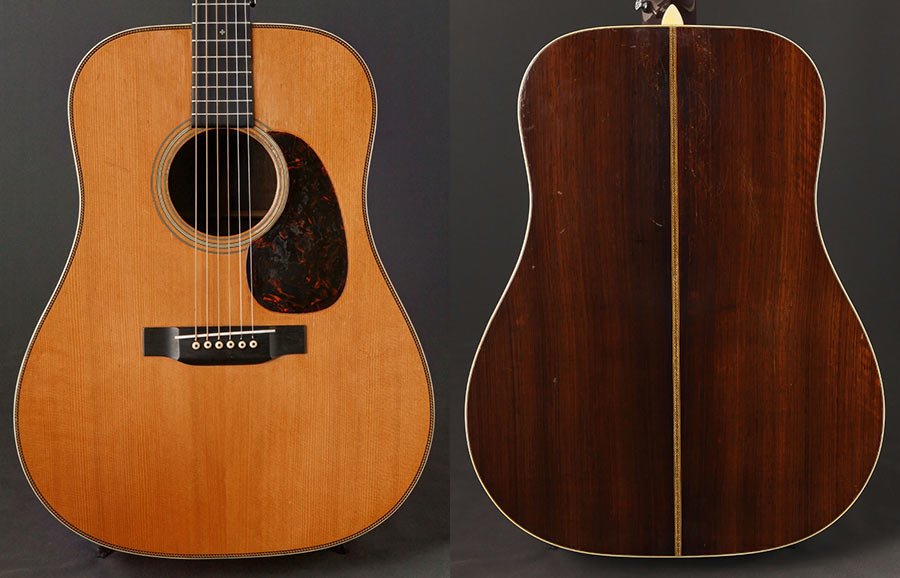
Is it Legit?
The best tool for figuring out whether or not your Martin is a counterfeit is to use common sense.
As a company, Martin is a true gem in today’s day-and-age because they still prioritize true craftsmanship and ensure the individual quality of each guitar. So right off the bat, here are some things to look out for:
- If your “Martin” has a jagged sound hole, it’s a knockoff.
- If the finish is heavily peeling or if the wood looks fake, then so is the guitar.
- One of the most common tells is the logo. Compare the “CF Martin & Co.” script on the headstock of your guitar with that of a Martin you know is legit. If anything looks even slightly “off,” you’re likely not dealing with an authentic Martin.
- Make sure the model number and serial number are both stamped onto the neck block, as this is standard procedure for Martin. You could also look up the serial number using the table from Martin—believe it or not, some counterfeits have totally random serial numbers that don’t correspond at all to any numbers that have been used by Martin.
Final Thoughts on the Martin Guitar
There’s a reason why Martin has been pumping out guitars for nearly 200 years and still isn’t showing any signs of stopping: quality products speak for themselves.
If you just want to mess around and have some fun with friends, sure—grab yourself a $100 Taylor or Yamaha.
But if you’re serious about music as an art, and you think acoustic guitar is the avenue you want to take, don’t settle—get yourself a Martin.
He is a good friend
And he has his own voice
And you get what you give
Sometimes it’s just noise
But if you treat him well
He will last your life long
And if you’re honest and open
Well, he will write you a song
—Zac Brown Band, “Martin”
Frequently Asked Questions
Why do Martin guitars sound so good?
The exceptional sound of Martin guitars is primarily due to well-sourced materials, quality construction, and innovative X bracing. The result is an exceptionally balanced, warm-sounding acoustic guitar.
Which is better: Martin or Taylor acoustic guitars?
When it comes to music, “better” is always a matter of opinion. However, most real guitarists would concede that Martins have superior tone and playability.
Why are Martin acoustics so expensive?
The prices of most products in the world are proportional to the products’ quality. Martin produces high-end acoustic guitars, constructed from premium materials. In short, their guitars are expensive because they’re just really good!
Share your thoughts in our forum! 💬
👉 Introduce yourself and show off your Martin guitar and other gear.
Share this post with your friends using these one-click sharing options:
👉 Click here to share on Facebook.
👉 Click here to share on X.
👉 Click here to share on LinkedIn.
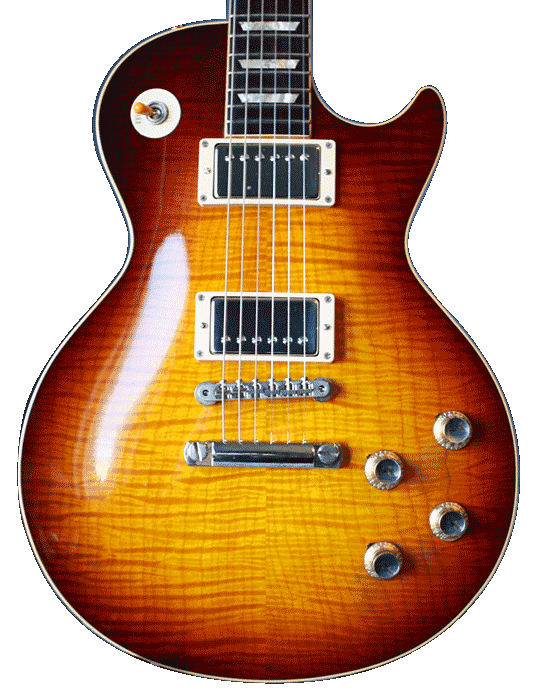
Get the latest reviews, guides and videos in your inbox.